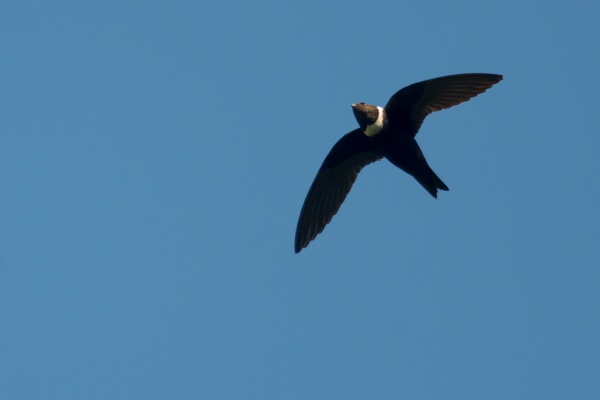Facts About White-collared swift
The white-collared swift is a large bird that inhabits central Mexico, the Greater Antilles, Trinidad, Peru, northern Argentina, and southeastern Brazil. These birds are renowned for their distinctive nesting practices, constructing nests from mud, moss, and insect parts on ledges within caves, often situated behind waterfalls. They lay two white eggs between March and July. While they prefer to breed in mountainous and hilly regions, they forage over a broader range, including lowland areas.
Physically, the white-collared swift is an impressive bird. It measures 20–22 cm in length and weighs between 90 and 125 grams. Its wingspan ranges from 45 to 55 cm. The bird's plumage is predominantly black with a blue sheen on its back, accentuated by a characteristic white collar and a slightly forked tail. These swifts are social beings, commonly observed in large flocks exceeding 100 birds, sometimes mingling with other swift species. They exhibit a rapid, direct flight pattern, capable of reaching speeds between 70 and 100 km/h. Their calls are screeching, and their wingbeats produce a distinctive "wooshing" sound.
Regarding their diet, the white-collared swift primarily preys on flying insects such as beetles, bees, and flying ants. Their breeding season from April to May coincides with the peak abundance of these insects. The nests they build are cup-shaped and crafted from a mixture of mud, moss, and regurgitated insect parts. These nests are positioned on ledges within cave walls. Once the eggs are laid, the young swifts take approximately 45–55 days to become independent.
In Mexico, the white-collared swift faces threats from predators like Virginia opossums and peregrine falcons. Despite these challenges, their gregarious nature and swift flight help them thrive in their diverse habitats.

 Dominican Republic
Dominican Republic